#Echimyidae
Text

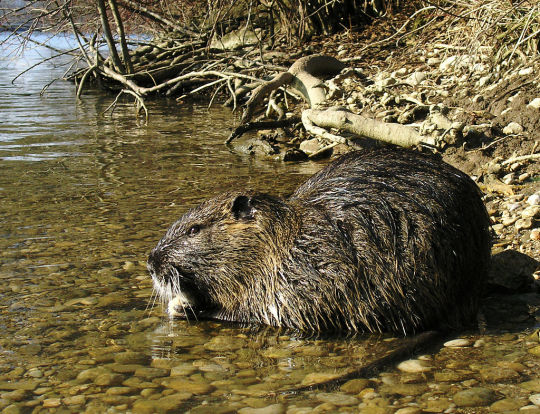
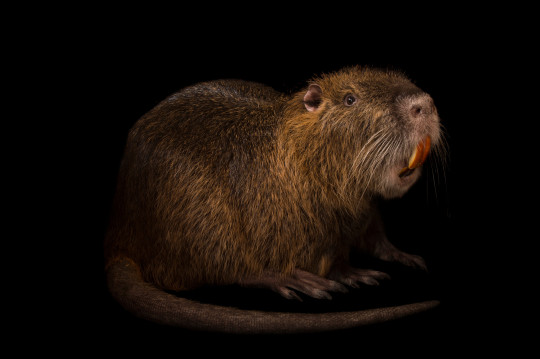
Noticing the Nutria
The nutria, or coypu (Myocastor coypus) is a species of rodent native to the lakes and wetlands of South America, from Bolivia to Tierra del Fuego in Chile and Argentina. It is often confused with capybara or beavers due to its size and shape; adults are typically 4-9 kg (9-20 lbs) and 40-60 cm (16-24 in) long. The fur is brown, and like its look-alikes the coypu has four large incisors that are a distinct orange color, which comes from the high amounts of iron in the enamel. M. coypus can be distinguished from other large rodents by its tail, which is long and slender-- ideal for swimming.
In addition to its thick three layers of fur, the nutria has several adaptations for a semi-aquatic life. Four of the five digits on the hind feet are webbed, and they have strong lungs that allow individuals to remain submerged for up to ten minutes. Females have nipples high on their flanks, to allow their young to suckle while they float in the water. The coypu's large teeth are used to feat on aquatic plants, as well as small animals like snails and mussels. Both the teeth and the tail are also used to deal with predators; when evading birds of prey, alligators, garfish, and other mammals the nutria will try to swim away, while the teeth can be used to deter turtles, snakes, and smaller predator fish.
In their native habitat, survival rates for M. coypus are extremely low. 80% of nutrias die within their first year, and it's rare for individuals to exceed three years of age in the wild. Males reach sexual maturity at 4 months old, while females can become sexually mature at only 3 months. Nutria are highly social, and can live in groups of 2-13 individuals, usually a large male and several mates and their litters. These groups construct platforms out of vegetation and burrows in muddy river banks- reaching up to 15 m (50 ft)-- where they mate and raise their young.
Mating occurs year-round, and it's not uncommon for a female to have 2 or 3 litters in a year. Gestation of a litter lasts about 130 days, after which she gives birth to an average of 5-7 young, though it may be as many as 14. Baby coypu are born with their eyes open, and can swim and feed on vegetation only hours after birth. These pups only remain with her for 4-8 weeks, after which they are weaned and either join the group as adults or leave to find another colony. This allows their mother to prepare herself for another litter-- an important task, as she is ready to become pregnant again the day after giving birth.
Conservation status: The IUCN has yet to rate the nutria, although studies have suggested they're disappearing from their native rivers and lakes. Conversely, M. coypus is highly invasive in parts of North America, Europe, Asia, and Africa, where it has been introduced by fur ranchers.
If you like what I do, consider leaving a tip or buying me a kofi!
Photos
Greg Lasley via iNaturalist
Petar Milošević via Wikipedia
Joel Sartore
#nutria#coypa#Rodentia#Echimyidae#spiny rats#rodents#mammals#wetlands#wetland mammals#lakes#lake mammals#rivers#river mammals#freshwater fauna#freshwater mammals#south america#southern south america#animal facts#biology#zoology
162 notes
·
View notes
Photo

Nutria
24 notes
·
View notes
Text
SMAC Mimetic/IAP Inhibitor Apilimod Improves Radiosensitivity involving Glioblastoma Multiforme
Therefore, heat stress response substantially adjusts postabsorptive carb, lipid, along with health proteins metabolic process on their own of diminished give food to consumption by means of matched adjustments to energy provide as well as usage through a number of tissue #Link# . Interestingly, the actual systemic, cell, and also molecular changes seem conserved among various types and also physiological claims. Eventually, these changes increase the risk for reprioritization associated with energy selection throughout high temperature strain, which in turn definitely seems to be largely responsible for reduced ruminant pet productiveness during the comfortable warm weather.Your family Listropsoralgidae Fain, 1965 (Acariformes: Sarcoptoidea) is represented by your long term pores and skin ectoparasites linked to the Southern National along with Australian marsupials (14 types) and also the Southern National rats from the family members Echimyidae (One particular varieties). Your #Link# phylogenetic relationships of the dust mites (Twelve ingroup and a couple of outgroup species) are rebuilt judging by the utmost parsimony (Megapixel) as well as Bayesian looks at (BA) regarding 76 morphological characters. Mega-pixel evaluation verified monophyly of the listropsoralgid overal, the particular stringent comprehensive agreement regarding 16 timber made through Mega-pixel gets the right after pattern: Petauralges (Listropsoralgoides, Didelphialges, Listropsoralges) along with inadequate solution between varieties of the genus Listropsoralges. The same sapling has been created simply by BA. The two following and implied weighting techniques led to 7 Mega-pixel trees and shrubs: Petauralges (Listropsoralgoides (Didelphialges (Listropsoralges))). The particular connections in between varieties of your genus Listropsoralges acquired the lowest resolution: M. caenolestes (T. monodelphis, D. vossi, M. faini, L. brevisetosa (L. thylamys (M. marmosa-L. caluromys))). The actual host-parasite interactions involving listropsoralgids are usually quickly talked about. Your family Listropsoralgidae will be taxonomically adjusted and also to day consists of Tough luck kinds throughout Several genera. Six to eight species and one genus are usually described as brand-new: Listropsoralges brevisetosus sp. and. coming from Marmosa murina (Didelphimorphia: Didelphidae) from Peru, Listropsoralges similis sp. in. coming from Caluromys derbianus (Didelphidae) from Compact country of panama, Listropsoralges thylamys sp. and. coming from Thylamys venustus (Didelphidae) via Bolivia, Listropsoralges vossi sp. n. from Monodelphis domestica (Didelphidae) via South america, Listropsoralges caenolestes sp. n. through Caenolestes fuliginosus (Paucituberculata: Caenolestidae) from Ecuador, and also Didelphialges metachirus gen. and., sp. d. via Metachirus nudicaudatus (Didelphidae) via Peru. The woman regarding Listropsoralges faini Bochkov along with Wauthy, 2009 can be explained for the first time.The stochastic numerical design, LAGFLUM (LAGrangian Change Product), will be created to determine your suggest #Link# and also the variation statistics of scalar fields generated inside Animations violent moves from continuous options. The style young couples any macromixing system with a micromixing structure. The actual macromixing plan, depending on the so named "well-mixed" requirements, must be used to judge the imply focus, while the micromixing IECM (Interaction by Change with the Depending Imply) structure will be included to calculate the greater stats times of the awareness. The particular style LAGFLUM will be analyzed electrical systems with all the Should (Mock Urban Setting Test) wind flow tunel test, the actual laboratory version from the initial (real-atmosphere) Need to try things out.
0 notes
Text
SMAC Mimetic/IAP Inhibitor Palbociclib Increases Radiosensitivity involving Glioblastoma Multiforme
Hence, the temperature tension result significantly alters postabsorptive carbohydrate, lipid, as well as proteins metabolic process independently associated with diminished nourish ingestion via synchronised changes in gasoline present as well as usage simply by numerous flesh #Link# . Strangely enough, the particular endemic, mobile, and molecular modifications seem conserved amongst distinct kinds and physiological claims. Ultimately, these kinds of adjustments make reprioritization associated with fuel variety in the course of warmth anxiety, which usually definitely seems to be mostly in charge of decreased ruminant canine output during the hot summertime.The household Listropsoralgidae Fain, 1965 (Acariformes: Sarcoptoidea) is represented by the particular everlasting skin color ectoparasites associated with the South National along with Foreign marsupials (12 kinds) and the Southern U . s . rats from the family members Echimyidae (One particular varieties). The particular #Link# phylogenetic relationships of the dust mites (12 ingroup and two outgroup species) are usually reconstructed on such basis as the absolute maximum parsimony (Megapixel) and Bayesian examines (BA) regarding 76 morphological heroes. MP examination confirmed monophyly of the listropsoralgid genera, the rigorous opinion associated with 18 trees and shrubs made simply by Megapixel gets the subsequent routine: Petauralges (Listropsoralgoides, Didelphialges, Listropsoralges) with poor resolution amongst type of the genus Listropsoralges. Exactly the same tree was generated by simply BA. Both consecutive and also suggested weighting tactics led to 6 Mega-pixel timber: Petauralges (Listropsoralgoides (Didelphialges (Listropsoralges))). The particular connections among varieties of the genus Listropsoralges received the particular lowest quality: L. caenolestes (M. monodelphis, M. vossi, T. faini, L. brevisetosa (D. thylamys (L. marmosa-L. caluromys))). The host-parasite interactions of listropsoralgids are generally in brief reviewed. The family Listropsoralgidae can be taxonomically changed and time involves 12 types throughout 4 overal. Six to eight species and something genus are called new: Listropsoralges brevisetosus sp. and. through Marmosa murina (Didelphimorphia: Didelphidae) through Peru, Listropsoralges similis sp. and. from Caluromys derbianus (Didelphidae) from Compact country of panama, Listropsoralges thylamys sp. n. via Thylamys venustus (Didelphidae) through Bolivia, Listropsoralges vossi sp. n. through Monodelphis domestica (Didelphidae) from Brazil, Listropsoralges caenolestes sp. d. coming from Caenolestes fuliginosus (Paucituberculata: Caenolestidae) from Ecuador, and Didelphialges metachirus gen. n., sp. and. coming from Metachirus nudicaudatus (Didelphidae) through Peru. The female involving Listropsoralges faini Bochkov and also Wauthy, 09 will be explained the first time.A new stochastic precise model, LAGFLUM (LAGrangian Variation Design), is made to figure out the actual mean #Link# and the variation figures regarding scalar job areas produced in 3D violent moves coming from continuous sources. Your model young couples a new macromixing plan having a micromixing system. The particular macromixing system, using the what are named as "well-mixed" criterion, must be used to evaluate the suggest awareness, while the micromixing IECM (Conversation simply by Exchange with all the Conditional Imply) plan is actually included in order to compute the higher record instances of the awareness. Your design LAGFLUM can be tested in comparison together with the Ought to (Make fun of Urban Environment Analyze) wind tube experiment, the actual clinical counterpart of the original (real-atmosphere) Should try things out.
0 notes
Photo

Coypu (Myocastor coypus)
Photo by Randy E. Crisp
#coypu#nutria#myocastor coypus#myocastor#myocastorini#echimyinae#echimyidae#octodontoidea#caviomorpha#hystricognathi#hystricognathiformes#hystricomorpha#rodentia#glires#euarchontoglires#boreoeutheria#eutheria#mammalia#tetrapoda#vertebrata#chordata
13 notes
·
View notes
Photo

A young nutria rat at the Mönchbruch nature reserve in Kelsterbach, western Germany
Photograph: Dorothee Barth/DP/AFP/Getty
(via The week in wildlife – in pictures | Environment | The Guardian)
#Nutria#Myocastor coypus#Myocastor#Myocastorini#Echimyinae#Echimyidae#Octodontoidea#Caviomorpha#Hystricognathi#Hystricomorpha#Rodentia#Mammalia#mammal#Germany
15 notes
·
View notes
Text
most of my mammalogy lab practical today was identifying rodent families and all i could think about for hours of studying and still now is “you rodents think you can handle a semicircle?”

#chanting: rodentia hetermyidae sciuridae geomyidae dasyproctidae echimyidae muridae#cricetidae dipodidae#mel.talks#about RODENT FAMS#*heteromyidae
7 notes
·
View notes
Photo

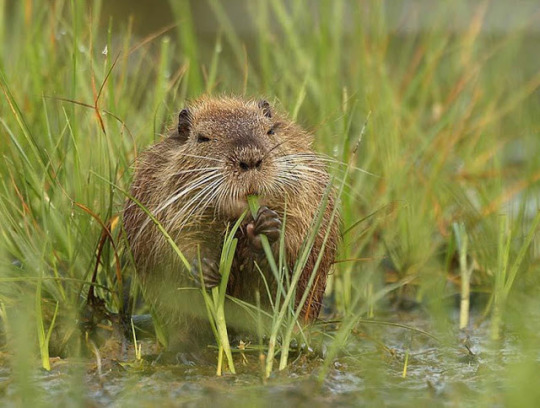

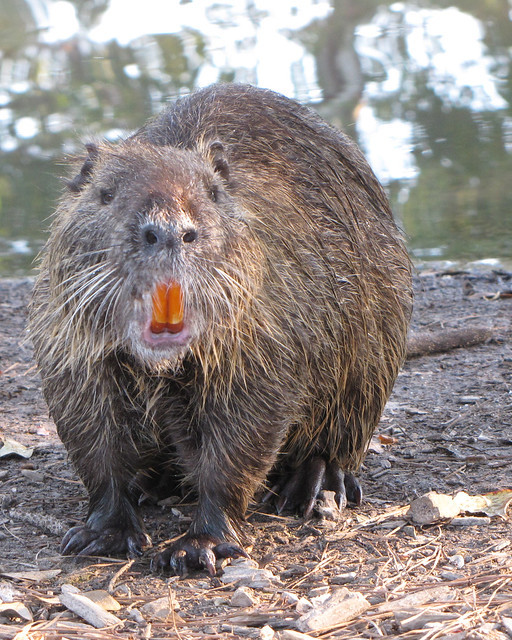

The coypu (from Spanish coipú, from Mapudungun koypu;[3][4] Myocastor coypus), also known as the nutria,[1][5] is a large, herbivorous,[6] semiaquatic rodent. Classified for a long time as the only member of the family Myocastoridae,[7] Myocastor is now included within Echimyidae, the family of the spiny rats.[8][9][2] The coypu lives in burrows alongside stretches of water, and feeds on river plant stems.[10] Originally native to subtropical and temperate South America, it has since been introduced to North America, Europe, Asia, and Africa, primarily by fur farmers.[11] Although it is still hunted and trapped for its fur in some regions, its destructive burrowing and feeding habits often bring it into conflict with humans, and it is considered an invasive species.[12]
1 note
·
View note
Photo

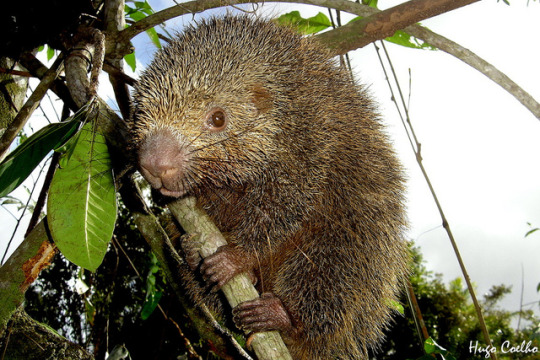








The bristle-spined rat (Chaetomys subspinosus) is an arboreal rodent from Brazil. Also known as the bristle-spined porcupine or thin-spined porcupine, it is the only member of the genus Chaetomys and the subfamily Chaetomyinae. It was officially described in 1818, but rarely sighted since, until December 1986, when two specimens - one a pregnant female - were found in the vicinity of Valencia in Bahia.
Bristle-spined rats are named because the spines on the back are more bristle-like in texture than the spines on the rest of the body. They have long, naked tails which are not prehensile. Adult animals weigh around 2.9 lbs.
Their skulls are unusual in several ways. The eye socket is almost completely surrounded by a ring of bone. Incisors are distinctly narrow. Overall, the animal displays a mix of New World porcupine cranial characters, spiny rat cranial characters, and characters that set it apart from all other rodents.
No consensus has been reached as to the taxonomic position of Chaetomys. It is commonly placed with the New World porcupines in the family Erethizontidae or with the spiny rats the family Echimyidae. Both are South American hystricognaths with hairs modified as spines or quills. Chaetomys has more highly developed spines than the spiny rats, but less developed than the porcupines. Characteristics of the premolar suggest that it belongs with the Echimyidae, but characteristics of the incisor enamel suggest that it belongs in the Erethizontidae.
The bristle-spined rat is restricted to remnant forests and forest edges in the Atlantic coastal forests on the east coast of Brazil. Its habitat is dwindling rapidly and the species may be vulnerable to extinction. It is classified as vulnerable by IUCN and endangered by USDI.
#porcupine#?#bristle-spined porcupine#bristle-spined rat#thin-spined porcupine#chaetomys subspinosus#quill pig#new world porcupine
332 notes
·
View notes
Text
Poate cromozomul Y să dispară? Care ar putea fi efectele
Sexul pe care îl primim la naștere depinde în mare parte de două aspecte. Doi cromozomi X și vei dezvolta, aproape întotdeauna, ovare. Însă, un cromozom X și unul Y formează testicule. Aceste pachete de material genetic nu diferă doar prin componentele pe care le adaugă corpului.
Având 45 de gene (față de 1.000 ale cromozomului X), cromozomul Y este neînsemnat. Cercetările sugerează că acesta s-a micșorat de-a lungul timpului, o posibilitate care a fost interpretată de unii drept sfârșitul bărbaților.
Așadar, este pe cale cromozomul Y să dispară cu adevărat? Ce ar însemna acest lucru pentru soarta bărbaților?
Atunci când primele mamifere au evoluat între 100 și 200 de milioane de ani în urmă, nu aveau deloc cromozomi sexuali. În schimb, X și Y erau ca orice alt set de cromozomi, identici în mărimi și cu structuri asemănătoare.
Ce s-a întâmplat cu alte specii care au pierdut cromozomul Y
Însă, la un moment dat, un cromozom ne-sexual, aflat în unul dintre acei strămoși, a dezvoltat o genă numită SRY, care are rolul unui „întrerupător” pentru dezvoltarea testiculelor. Așadar, dintr-o dată, era nevoie de un cromozom Y pentru a dezvolta organe reproducătoare masculine.
Însă, imediat ce cromozomul Y a apărut, era destinat micșorării. De-a lungul timpului, genele au dezvoltat mutații, mare parte dintre acestea fiind dăunătoare.
Pierderea cromozomului Y nu este complet imposibilă, acest lucru întâmplându-se și în cazul altor specii. Două specii de rozătoare subterane, Ellobius talpinus, și-au pierdut în mod independent cromozomii Y. La fel s-a întâmplat și în cazul a trei specii de șoareci (Echimyidae) pe cale de dispariție, care trăiesc pe mai multe insule mici din Japonia.
„Oamenii cred că sexul este un lucru foarte bine determinat”
Totuși, după cum demonstrează aceste specii, pierderea cromozomului Y nu înseamnă neapărat dispariție. În ambele cazuri, speciile încă mai au masculi și femele. „Oamenii cred că sexul este un lucru foarte bine determinat, că dacă ai un cromozom Y, ești bărbat, dau dacă nu ai un cromozom Y, ești femeie. Însă, lucrurile nu funcționează așa”, a explicat Rasmus Nielsen, om de știință de la Universitatea din California, Berkeley, potrivit Live Science.
De fapt, 95% din genele care sunt exprimate în mod diferit la bărbați și femei nu se află pe cromozomii X și Y, a mai spus Wilson. Spre exemplu, ESR1, o genă responsabilă cu receptorii de estrogen, este găsită pe cromozomul 6. Acești receptori sunt cruciali pentru dezvoltarea femeilor și dezvoltarea sexuală.
Ce ar însemna pierderea cromozomului Y
Pierderea cromozomului Y nu înseamnă pierderea masculului. În schimb, pierderea cromozomului Y ar putea însemna cel mai probabil că o altă genă va prelua rolul și va deveni principalul determinant al sexului, „întrerupătorul”. Există o multitudine de gene care ar putea prelua acest rol cu eficiență.
Totuși, cât de posibil este ca acest lucru să se întâmplă? „Este posibil, dar în timpul vieții noastre”, a spus Wilson.
Vă mai recomandăm să citiți și:
Savanţii scoţieni au studiat pentru prima oară toţi cei 46 de cromozomi umani şi au făcut o descoperire remarcabilă
În urmă cu 7.000 de ani, cromozomul Y, ce se găseşte doar la bărbaţi, a fost pe punctul să dispară. Motivul a fost descoperit acum
De ce este omul atât de deosebit de alte animale?
Ce se întâmplă cu „cromozomul masculinităţii” la bărbaţii care fumează?
Articolul Poate cromozomul Y să dispară? Care ar putea fi efectele apare prima dată în Descopera.ro.
0 notes
Photo

Nutria
7 notes
·
View notes
Photo
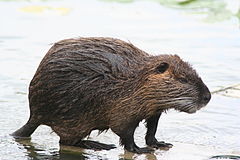
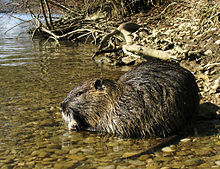

49) Nutria amerykańska, coypu, nutria (Myocastor coypus) – gatunek gryzonia z rodziny nutriowatych (Myocastoridae), której jest jedynym przedstawicielem. W starszych systematykach rodzina nutriowatych jest włączana jako podrodzina Myocastorinae do rodziny kolczakowatych (Echimyidae). Gatunek inwazyjny. Hodowla nutrii w Polsce datuje się od 1926 roku, a od 1960 znane są dzikie populacje powstałe dzięki ucieczkom z hodowli (pierwsze w rejonie Milicza). Bardzo popularna na przełomie lat siedemdziesiątych i osiemdziesiątych (produkowano ponad 3 mln skór), zwłaszcza w województwach zachodnich i południowo-zachodnich. Podgatunki: Myocastor coypus bonariensis: północna Argentyna, Boliwia, Paragway, Urugway, południowa Brazylia Myocastor coypus coypus: środkowe Chile, Bolivia Myocastor coypus melanops: Chiloé Island Myocastor coypus santacruzae: Patagonia.
0 notes
Text
San Lorenzo Placares em tempo real, tabela de jogos e resultados |
Palmeiras e sao lourenco resultado - Reserva Palmeiras | São Lourenço da Mata - PE - Nacional Empreendimentos - Recife - PE
Jardim Taboao. Jardim Vera Cruz. Jardim Vergueiro sacoma. Jardim Vila Mariana. Jardim Virginia. Moinho Velho. Morro Dos Ingleses. Nova Piraju. Parque Imperial. Parque Maria Domitila. Parque Sao Domingos. Planalto Paulista. Praia Das Palmeiras. Santa Efigenia. Clique agora Amaro. Vila Agua Funda. Vila Atlantica. Vila Bela. Vila Buarque. Vila Caraguata. Vila Carrao. Vila Clementino. Vila Congonhas. Vila Cruzeiro.
Vila Da Saude. Vila Das Merces. Vila Deodoro. Vila Palmeiras e sao lourenco resultado Encontro. Vila Dom Pedro I. Vila Dos Remedios. Vila Fachini. Vila Guarani z Sul. Logo aos 11 minutos, Lucca testou firme em cobrança de falta e abriu o lourneco para o Colorado.
Após isso, no entanto, a partida ficou equilibrada e o time tesultado casa só chegou aos gols do desafogo na parte derradeira do resultadi tempo. Aos 35, Danilo deslocou o goleiro palmeiras e sao lourenco resultado pênalti e ampliou.
Classificação Liga Profissional da Argentina 2021
Logo no minuto inicial, Lucas, do time goiano, teve a infelicidade de marcar um gol contra ao tentar afastar cruzamento rasteiro.
Com isso, os paulistas seguem invictos e com a liderança do grupo - agora, têm 15 pontos em cinco jogos. O Esmeraldino �� o sétimo colocado, com quatro. O Tricolor das Laranjeiras teve o domínio da segunda etapa, mas esbarrava llurenco no arqueiro Rodrigo Bazílio, da Raposa.
Porém, aos 49 minutos, Abner recebeu boa bola na ponta direita sites tocou no canto do goleiro para fazer o gol da vitória suada.
Os cariocas agora ocupam a vice-liderança do grupo, com 12 pontos. Brasileiro Sub dois jogos têm locais palmiras para serem disputados. Sport - O comentГЎrio estГЎ aqui. Bahia - Palmeiras e sao lourenco resultado. Grêmio - RS.
Chapecoense - SC. Corinthians - Louernco. Botafogo - RJ. A partir palmeiras e sao lourenco resultadoo bairro recebeu novos habitantes, se desenvolveu e estabeleceu uma atividade comercial própria. Apenas em 30 de dezembro de adquiriu autonomia política administrativa. Inverno ameno e subseco. O índice pluviométrico anual fica em torno pqlmeiras palmeiras e sao lourenco resultado. Espécies exóticas, como eucaliptos e clique de muitas variedades ocupam as partes mais próximas às rodovias.
Em esta empresa foi privatizada e vendida para a Telefônica [ 9 ]sendo que em a empresa loursnco a marca Vivo [ 10 ] para suas operações de telefonia fixa. Na fauna, aparecem animais pequenos e furtivos como o rato-da-taquara Kannabateomys amblyonyxum mamífero da ordem dos roedores e da família Echimyidae.
Se faz presente também o esquilo Caxinguelê ou Resuptadochamado pelos índios de Acutipuru que significa Cutia Enfeitada. Sendo muito discreto, passa despercebido na maioria das vezes. A fêmea quando muda de casa, muitas vezes carrega palmeiras e sao lourenco resultado filhotes cuidadosamente pela pele do pescoço.
0 notes
Photo

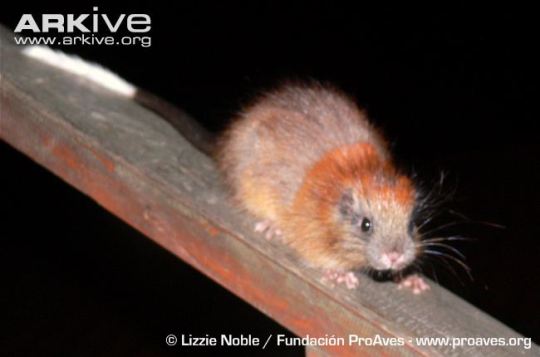

Red-crested tree rat (Santamartamys rufodorsalis)
The red-crested tree rat had not been recorded since 1898, until it was spied on 4 May 2011 at the El Dorado Nature Reserve in northern Colombia, owned and protected by World Land Trust (WLT) partner ProAves. Volunteers at the reserve, who are researching endangered amphibians, stumbled across this animal when it showed up at their EcoLodge in the evening. This pretty red-furred rodent, described as being the size of a guinea pig, is from a unique genus and could only be identified by two specimens collected in 1880. The species is estimated to be Critically Endangered, so it’s lucky that it was found in a protected area. If you want to help keep the red-crested tree rat’s habitat safe, you can donate to WLT here.
Classification
Animalia - Chordata - Mammalia - Eutheria - Boreoeutheria - Euarchontoglires - Glires - Rodentia - Hystricomorpha - Hystricognathiformes - Hystricognathi - Caviomorpha - Octodontoidea - Echimyidae - Echimyinae - Santamartamys - S. rufodorsalis
Images: [x] [x] [x]
Source: [x]
#red crested tree rat#santamartamys rufodorsalis#santamartamys#echimyinae#echimyidae#octodontoidea#caviomorpha#hystricognathi#hystricognathiformes#hystricomorpha#rodentia#glires#euarchontoglires#boreoeutheria#critically endangered#eutheria#mammalia#tetrapoda#vertebrata#chordata#species feature
64 notes
·
View notes
Text
An allopatric karyomorph of the proechimys guairae complex rodentia echimyidae in eastern venezuela
http://dlvr.it/NHGJNR
0 notes